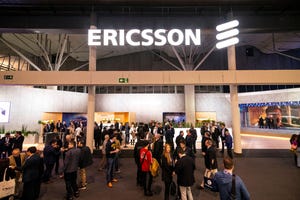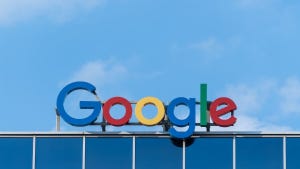BT plays it cool with Johnson energy partnership
BT announces partnerships targeting reduced energy use in buildings and data centers during its Sustainability Festival at Adastral Park.

BT will team up with Johnson Controls to offer products for monitoring energy use in workspaces, the telco announced at its Sustainability Festival in Adastral Park last week.
In a further effort to reduce energy use, this time in its own network, BT is also partnering with several companies to trial liquid cooling technology.
The partnership with Johnson Controls will help tackle an area that's a big part of CO2 emissions worldwide. Energy use in the buildings sector represents 26% of all carbon emissions, said Sawar Khan, BT's global head of digital sustainability for business, echoing numbers from the International Energy Agency.
Speaking about the partnership, he said "combining Johnson Controls' OpenBlue digital platform with BT's secure and resilient networks, we're empowering our customers to digitally measure, analyze and optimize energy usage across their buildings."
Katie McGinty, vice president and chief sustainability and external relations officer for Johnson Controls, later spoke about the importance of digitalization for building decarbonization.
While it is important to increase energy efficiency and decarbonize heating, ventilation and air conditioning (HVAC) systems through heat pumps, there is also a big role for digitization to play, she said. Johnson is promoting a platform it calls OpenBlue to connect HVAC to sensors in lighting and security systems. The company says this can can help to gauge occupancy across a workspace.
See no data, hear no data
McGinty claims there has been less data analysis of the buildings sector than others, despite the sizeable contribution buildings make to climate change, saying "see no data, hear no data, act on no data," has been the dominant approach.
With buildings currently operating in an on/off mode, switching off systems to save energy can be difficult, she said, arguing that data is the solution to this problem. The OpenBlue platform can connected to the security systems to optimize energy consumption.
A tenant could switch off the heating on a particular floor if data showed it were unoccupied, for example. Another advantage of the platform is that it can connect to behind-the-meter resources such as solar panels or EV chargers to reduce the load on the grid or sell surplus electricity, according to Johnson.
BT has been active in harnessing data for emission reductions. Earlier this year, the company unveiled its Carbon Network Dashboard and Digital Carbon Calculator to help customers understand their emissions stemming from use of BT products.
BT also showcased a further foray into the smart buildings area with an eco-house showcased on site, combining a host of climate-friendly materials with smart tech. It comprises features like rainwater collection and solar panels, and includes Suffolk County Council's tech offering Cassius that helps elderly people live independently.
Also on show at Adastral Park were other initiatives BT is taking to track its energy use. One of them is a digital twin of the facility, allowing someone to visualize energy use on screen or through augmented reality goggles.
Keeping it cool
The other news that came out of the event was to do with BT's foray into liquid cooling technology, where it is working with several partners to test different approaches. It will trial precision liquid cooled network switches using technology from Iceotope with Juniper Network QFX Series switches in what it claims is an industry first.
The Iceotope solution, pictured above, sprays liquid directly onto the equipment and is intended for use in data centers. The solution was showcased at the Sustainability Festival and used to cool an HPE x86 server in what is likely a more water-efficient approach than the immersion-based technology BT is also looking into.
.png?width=700&auto=webp&quality=80&disable=upscale)
Immersion4's liquid cooling solution was on show at Adastral Park. (Source: Tereza Krásová/Light Reading)
Together with Immersion4, BT is trialing an approach where network servers are submerged in an immersion tank filled with dielectric liquid that does not conduct electricity. This presumably means it avoids the kind of issues one might expect if a hair dryer is dropped into the bathtub.
Any network equipment can be placed in the container, according to BT, once cooling fans and heating are removed. That means all of the company's equipment used in data centers is compatible with the technology.
BT is also trialing Nexalus' liquid-cooled cold plates of networking equipment housed in a cooling enclosure, alongside "cooling using sprayed-on partial immersion of data center equipment." The idea is to determine which technology is best suited for what scenario, as BT hopes to replace the less energy-efficient air cooling technology it is currently using in its network.
As a result, the telco expects it may be able to reduce the energy required for system cooling by 40% to 50%, while also allowing equipment to be packed closer together. This will reduce what BT calls real estate footprint and use less material.
.png?width=NaN&auto=webp&quality=80&disable=upscale)
PeaSoup's solution seems to be both compatible with network gear and rubber duck-friendly. (Source: Tereza Krásová/Light Reading)
Also on show – although not part of the announced trials – was an immersion liquid cooling system from PeaSoup Cloud, which can also reuse the heat generated by a radiator.
About the Author(s)
You May Also Like












